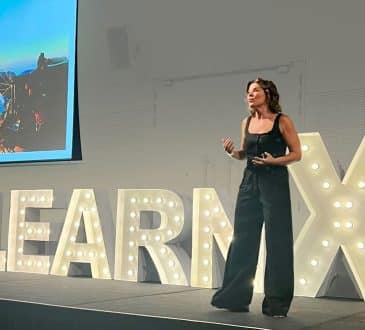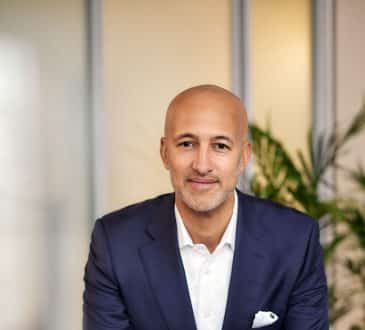The Pandemic is Widening the Diversity Gap in Corporate America: What Can CEO’s do About it?

As the world continues to deal with the health, social and economic impact of Covid-19, as well as continued racial injustices, company leaders must be more mindful than ever about people of color on their teams. Now is definitely not the time for companies to be complacent in regard to diversity, equity and inclusion efforts. In fact, organizations that prioritize inclusion may emerge from the pandemic stronger.
One thing CEO’s need to keep in mind is that minority communities are being hit the hardest by this pandemic, which could greatly increase the amount of stress carried by minority employees. For example, elevated distraction of minority employees due to family/community concerns could become a detriment to the productivity of those employees, which could cause an even further gap between them and advancement opportunities. This could also result in minority employees developing more resentment towards leadership who are primarily white, and therefore, incapable of truly understanding their plight.
The monumental amount of personal stress caused by the pandemic also has a lot to do with the current civil unrest that was sparked by the death of George Floyd and others. To further alarm, rioting in Kenosha, Portland, and other cities due to recent police shootings has caused a lot of tension and divide in this nation. This means minority employees will likely be much more stressed out and uncomfortable with the idea of returning to the physical workplace.
Covid-19 has also exposed heightened anti-Asian racism in the U.S., where Asians and Asian-Americans have been targeted with racial slurs and assaults in workplaces and public spaces. New databases indicate more than 1,700 reports of hate crimes and xenophobic rhetoric targeted towards Asians in America since mid-March.
But even for companies that have solid diversity and inclusion strategies, Covid-19 has forced these leaders to think creatively about how best to support their talent, including making all employees feel like they belong. In order to create “shared” experiences for employees during the pandemic, some companies have hosted virtual happy hours, coffee meetings and digital town halls, and have even extended human resource office hours for those who simply want to talk.
So, what else can we, as company leaders do to ensure all employees are being represented?
As a retired Navy SEAL, start-up founder and Black American, I have experienced firsthand the true meaning of good leadership and inclusion (or lack thereof) in the workplace. Companies that thrive have a systematic, business-led approach to diversity and inclusion, and place a special emphasis on inclusion.
Below are some tips on how CEO’s can support employees of color during the pandemic and beyond.
- Strengthen leadership accountability and capabilities for inclusion and diversity.
- Foster a sense of belonging: Managers and company leaders have an important role to play in engaging employees of color and other marginalized employees, acting as an important layer of support.
- CEO’s must communicate openly and vulnerably with their workforce in order to understand if there is a widening gap in diversity. These conversations will also allow the CEO to brainstorm potential solutions to the problem by hearing the perspectives of others; communication is critical, as usual.
- Employee education: Web-based training on diversity and inclusion is an easy initiative for a CEO to put in place (just ensure the training has been properly vetted prior to rollout).
- CEO’s can make it their personal goal to learn more about the widening diversity gap so that they have a better understanding of how to address the problem within their own organization. Part of the problem is that some CEO’s simply don’t know about diversity and inclusion needs because they simply don’t take the time to understand them.
- Create a diversity and inclusion task force within the company that oversees and creates policies around:
Hiring
Vendor selection
Employee counseling
Wellness programs and EAP’s
Company leadership requirements
Equal Opportunity - CEO’s can also conduct employee surveys in order to understand how the workforce as a whole feels about diversity and inclusion. This data can then be used to build policies and resources for the workforce according to the employee beliefs/needs. Seeking feedback from your employees and incorporating those ideas to create relevant training and other activities will equip employees with the knowledge, skills, and resources they need to maintain an inclusive work environment.
- CEO’s can host and lead intimate conversations around diversity and inclusion and/or any perceived racial tension within the organization in order to keep the team on one page.
- Create Employee Resources Groups (ERGs) as part of the company’s ongoing efforts toward making the work culture more diverse and inclusive.
- Create a list of inclusion behaviors as part of the company’s core values so all employees share the responsibility of maintaining a safe and healthy work environment for everyone.
- Show appreciation for all employees and recognize their contributions, no matter what role.
- If the CEO is very public about her/his beliefs in diversity and inclusion, then the team will follow.
All of us are adjusting to this new world of work. Now, more than ever, is the time to create effective diversity and inclusion strategies, from the top down. Practicing inclusive leadership in times of crisis helps curb the spread of misinformation, therefore decreasing the risk of bias, xenophobia and racism. By focusing on diversity and inclusion in the workplace, we can create happier and healthier employees, broaden our talent pool, and ultimately boost business performance.
Commentary by Ty Smith. Here’s what you’ve missed?
World’s Best Cities For Street Food-Obsessed Travellers.
World’s Best Cities For Shopping.
World’s Safest Cities.
World’s Most Economically Influential Cities.
Add CEOWORLD magazine to your Google News feed.
Follow CEOWORLD magazine headlines on: Google News, LinkedIn, Twitter, and Facebook.
This report/news/ranking/statistics has been prepared only for general guidance on matters of interest and does not constitute professional advice. You should not act upon the information contained in this publication without obtaining specific professional advice. No representation or warranty (express or implied) is given as to the accuracy or completeness of the information contained in this publication, and, to the extent permitted by law, CEOWORLD magazine does not accept or assume any liability, responsibility or duty of care for any consequences of you or anyone else acting, or refraining to act, in reliance on the information contained in this publication or for any decision based on it.
Copyright 2024 The CEOWORLD magazine. All rights reserved. This material (and any extract from it) must not be copied, redistributed or placed on any website, without CEOWORLD magazine' prior written consent. For media queries, please contact: info@ceoworld.biz
SUBSCRIBE NEWSLETTER








